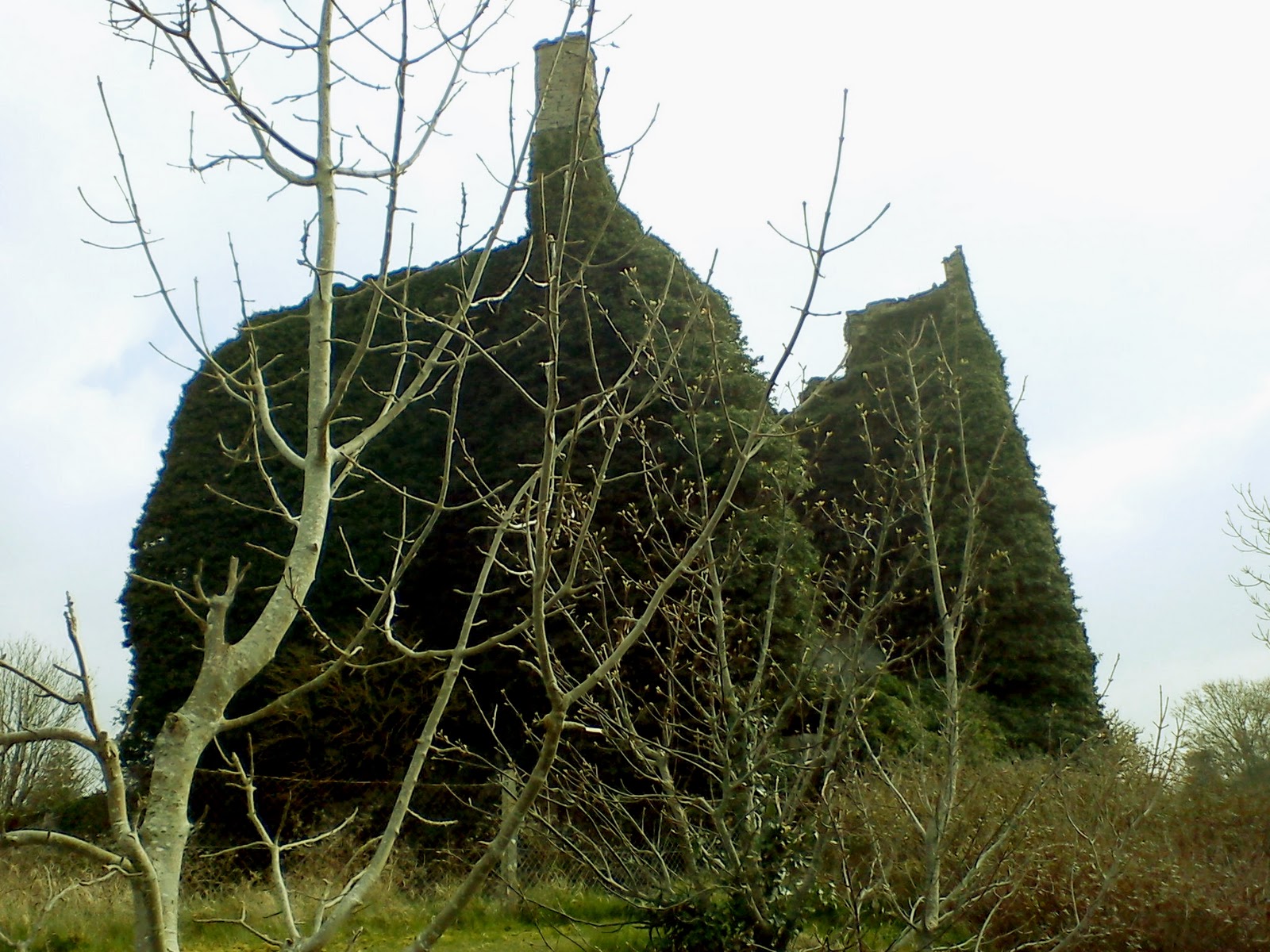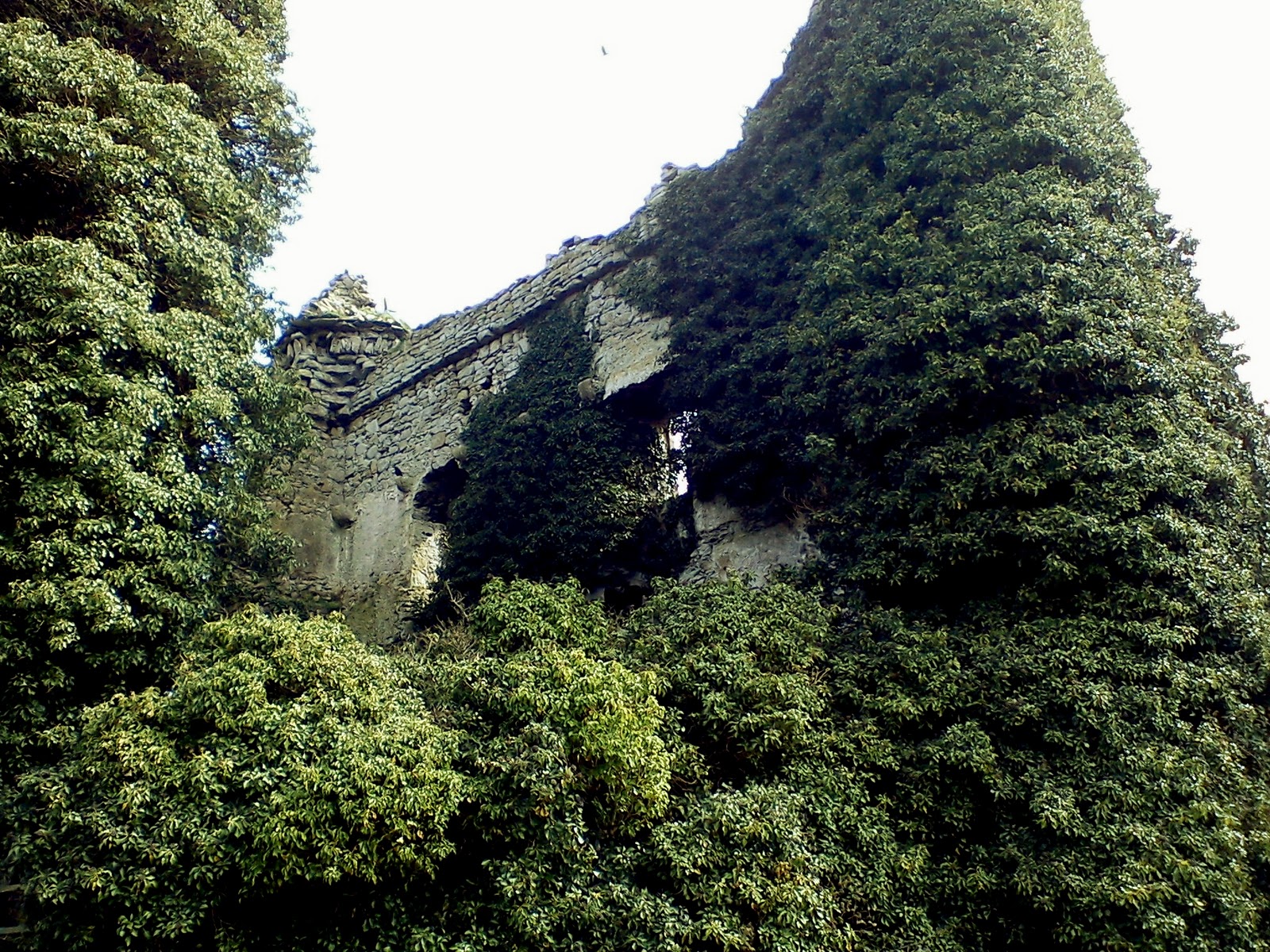I remember our journeys by boat to Dromineer situated on the shores of Lough Derg in North Tipperary. Note the Castle visible in the background!

Three decades on it is almost entirely taken over by ivy. This is partially because a fence was put around the structure preventing the ivy from being kept down by the grazing of animals.


Ivy, especially when it reaches blossoming maturity, provides some of the largest habitats to a very diverse and immense number of insects. These in turn create important food sources and the thick foliage and stems of the ivy make valuable roosting grounds for birds and bats. As can be expected, they have all now moved into the castle! Whilst the new inhabitants may be having a ball at this moment, the ivy will gradually lead to the destruction of the castle and ultimately neither the castle nor the ivy’s inhabitants will survive. So time has come to act. The ivy needs to be removed.

We are told the current solution to removing ivy is the spray application of biocide onto the leaf growth and approximately four weeks later the leaves fall off the vines. What exactly gets killed? Is the plant really dead or just shocked into loosing its leaves? What about the workers who are subjected to the carcinogenic poison during the spray application, and the wind breeze that carries it into the homes of the neighbouring houses? And what about the rich biodiversity living in the ivy? This method doesn’t give them time to re-establish gradually elsewhere! No, the poison kills them too, and worse still it enters into our ecology and travels though and up into the food chain coming back to haunt us at a later stage again. There are many studies on the effects these chemicals have on us and our environment and none of these are good. Here are just a few websites which elaborate on what the industry is fighting tooth and nail to disguise:
- http://www.pesticidescancer.eu/
- http://www.pesticideactionnetwork.net/
- http://www.pan-international.org/
- www.guarding-our-earth.com/aggrand/roundup.htm
- www.ipsnews.net/news.asp?idnews=46516
Why, after reading all those websites the old method of cutting the ivy at its base and letting it wilt over a couple of seasons might not be such a bad alternative!
